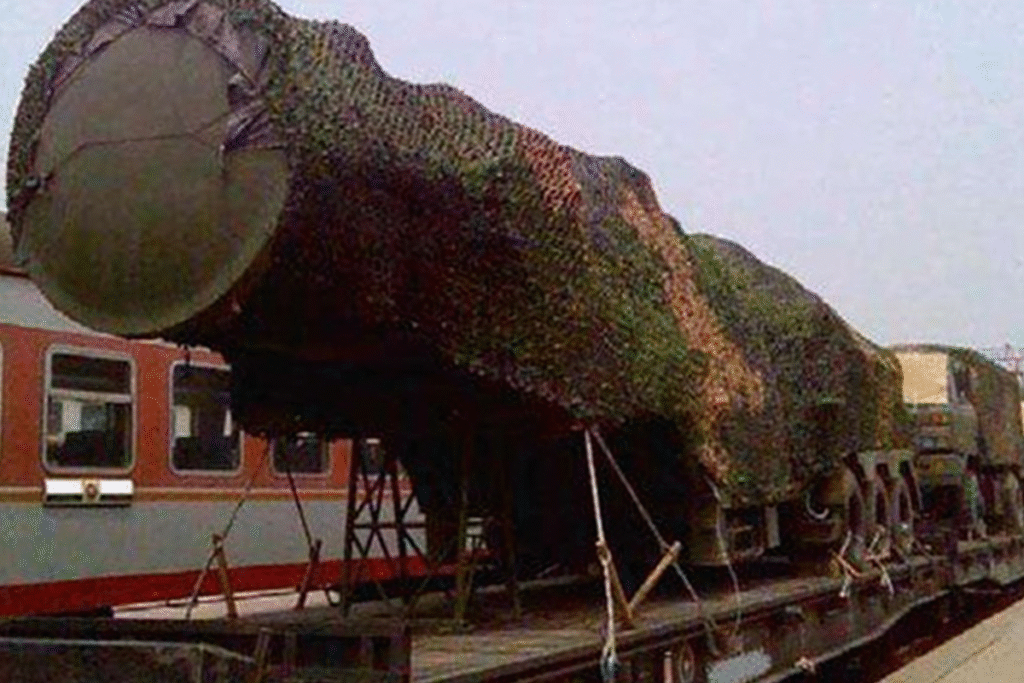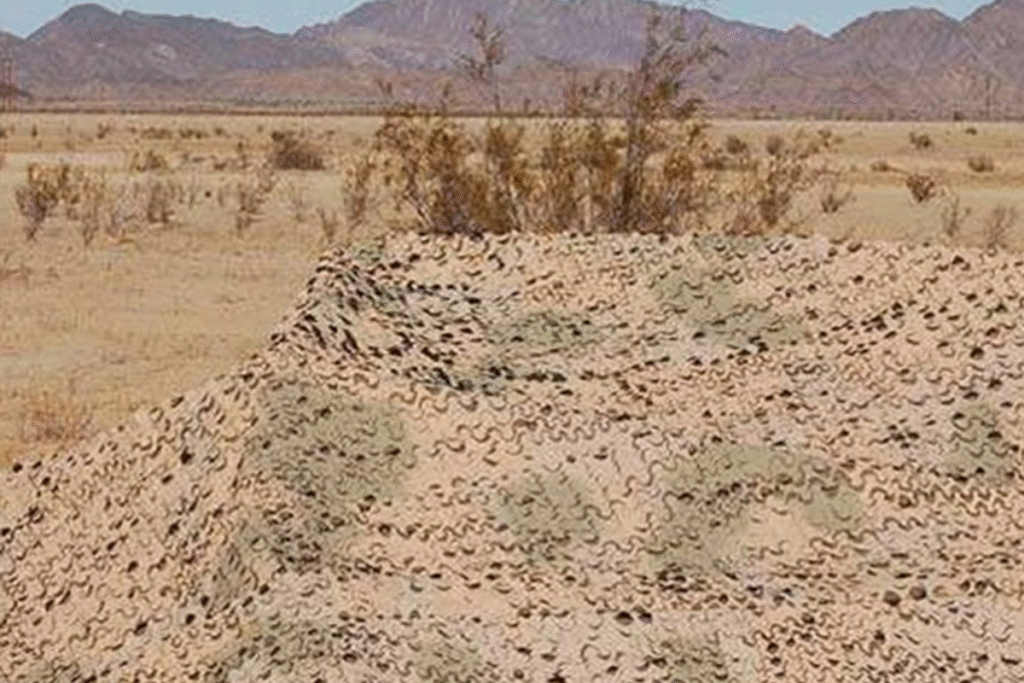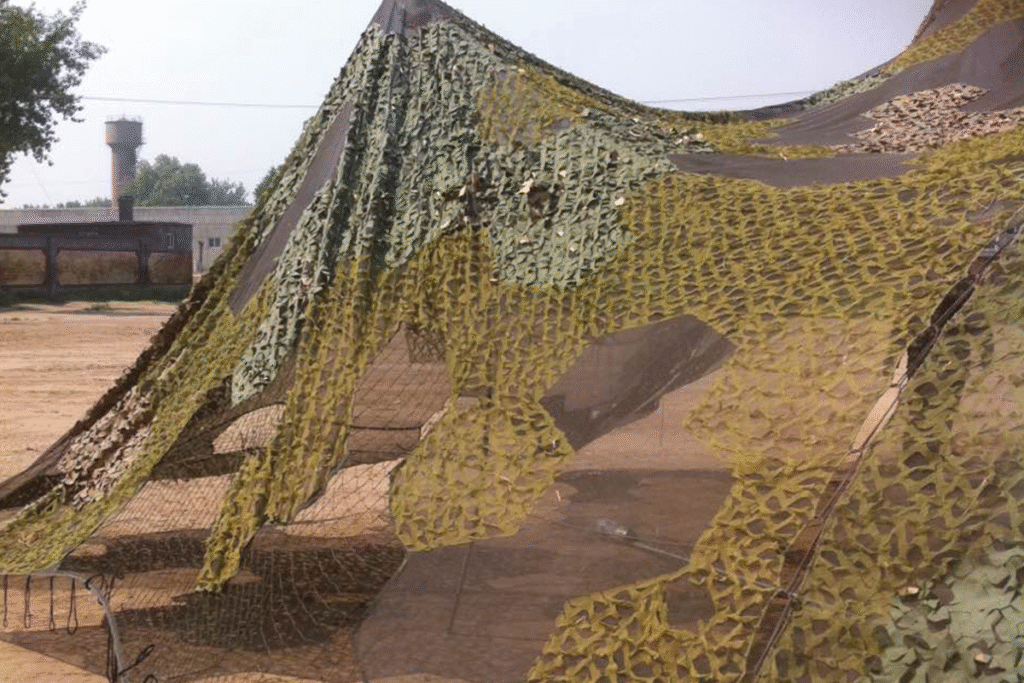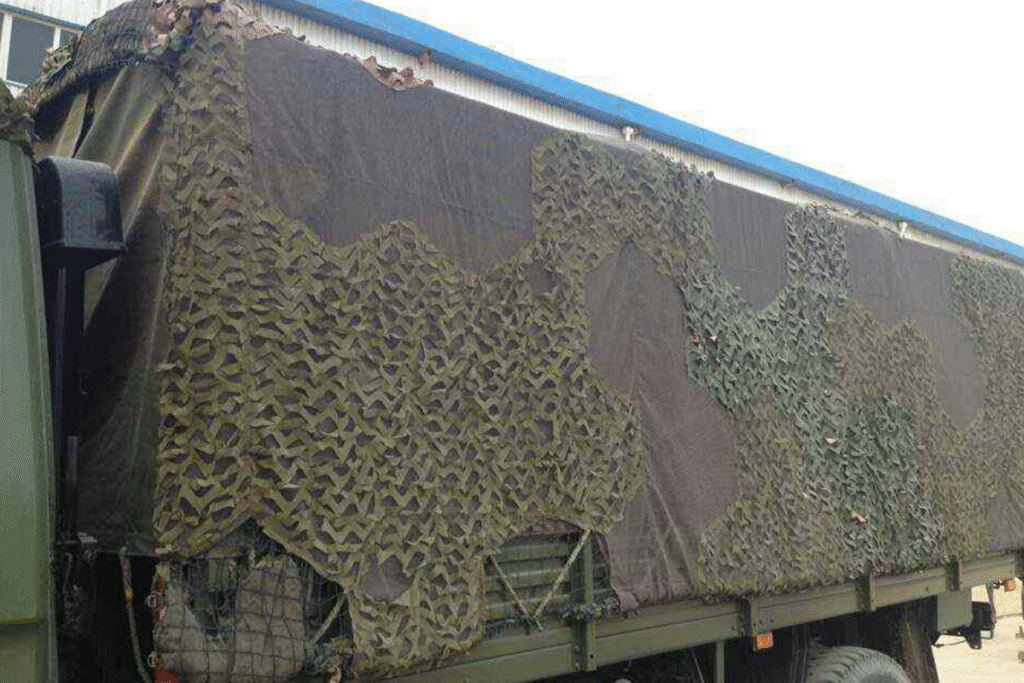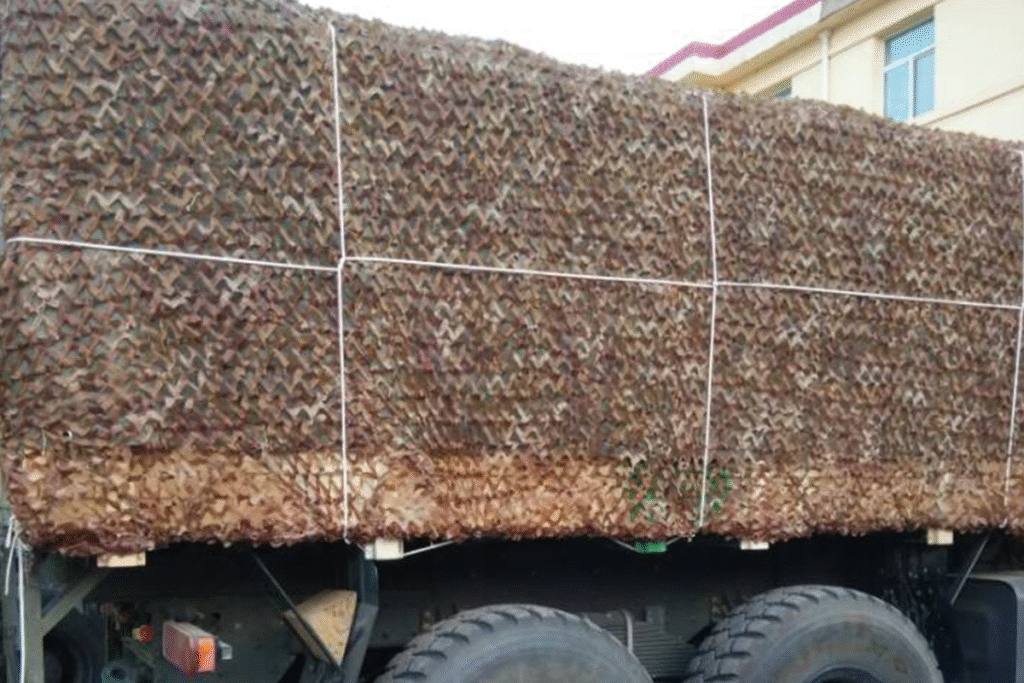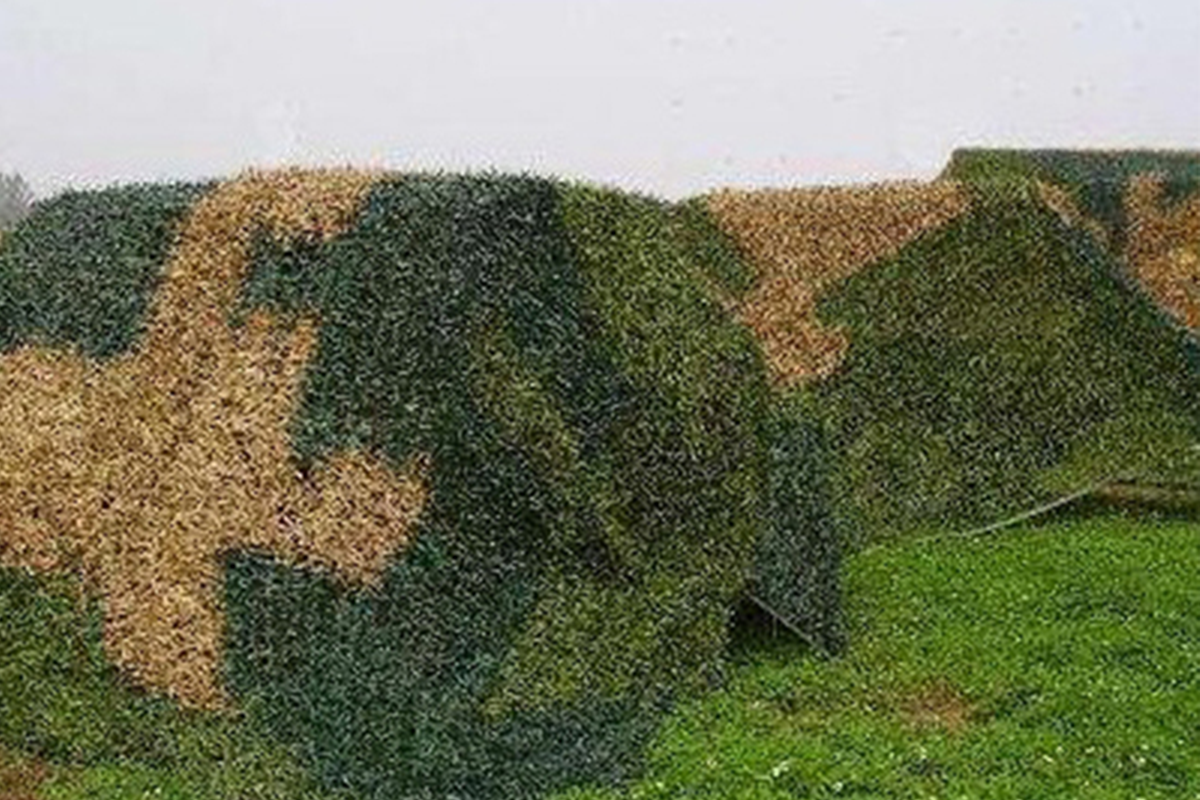Classification of military camouflage nets
The core goal of the military camouflage network is to achieve “battlefield invisibility”, which needs to fight against modern reconnaissance technologies (visible light, infrared, ultraviolet, radar and other multi-spectrum detection), which is further subdivided according to technical characteristics and environmental adaptability:
- Classification by protection band
Anti-optical reconnaissance camouflage net
Function: Resist the naked eye and near-infrared night vision with multi-color camouflage spots (green, brown, black), the base material is PVC plastic rope or film, and the lightweight design is 710.
Anti-ultraviolet reconnaissance camouflage net
Function: Adopt microbubble snow-imitation coating, ultraviolet reflectivity exceeds 90%, avoid exposure to target 710 due to ultraviolet contrast in snow environment.
Anti-radar reconnaissance camouflage network
Technology: Metal fiber weave or stainless steel staple fiber blend, scattering radar waves through cut flower stretching process.
Multi-spectrum comprehensive camouflage network
Function: Synchronous countermeasure against visible, infrared, radar and thermal imaging reconnaissance.
- Classification by environmental suitability
Woodland type: dark green, medium green spots, near-infrared reflectance ≥0.5, simulating forest background.
Desert type: mainly sand yellow and brown, the coating is resistant to wind and sand erosion, and is resistant to high temperature and drying.
Snow type: high UV reflection + low temperature flexibility (-40°C no brittleness).
Grass prototype: yellow-green transition color, suitable for the interlaced environment of meadow and dry grass.
- Classification according to the scale of protection targets
Type Protection Objectives Technical Focus Cases
Individual snipers, scouts Lightweight, noise reduction, anti-infrared helmet covering net
Equipment-level tanks, missile launchers Multi-spectrum stealth + rapid erection
Fortification-level airports and command posts are spliced in large areas and resist harsh climates
